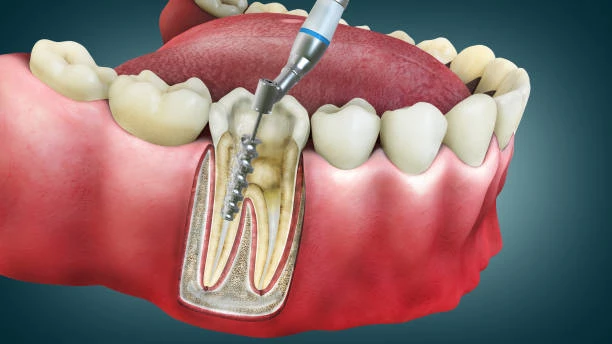Root Canals: Busting Myths and Exploring Modern Treatment Advancements
For decades, the words “root canal” have been enough to make dental patients uneasy. Root canal therapy, one of the most common dental procedures, has been surrounded by myths, fear, and misunderstanding. Many people associate it with pain, long recovery times, and outdated techniques. In reality, modern dentistry has transformed the root canal into a comfortable, highly effective procedure that saves natural teeth and restores oral health.
Thanks to new technology, advanced anesthesia, and improved techniques, root canal treatments today are faster, less invasive, and far more comfortable than they once were. For patients who may still hesitate at the mention of the procedure, it’s important to separate fact from fiction and better understand the benefits of modern root canal care.
What are the Most Common Myths About Root Canals?
Despite being one of the most routine dental procedures, root canals are still misunderstood. Let’s break down some of the most common myths:
Myth 1: Root canals are extremely painful.
This is the most persistent myth. In the past, root canal procedures may have been uncomfortable due to limited anesthesia options and older techniques. Today, with modern numbing agents and advanced tools, root canals are virtually painless—often no more uncomfortable than getting a standard filling.
Myth 2: It’s better to pull the tooth than get a root canal.
Many patients believe extraction is easier, but saving your natural tooth is almost always the best option for long-term oral health. Removing a tooth can lead to shifting teeth, bite problems, and the need for implants or bridges. Root canals preserve the natural structure of your mouth.
Myth 3: Root canals cause illness.
This myth comes from outdated studies in the early 1900s that suggested a link between root canals and systemic illnesses. Modern science has disproven these claims. Root canal therapy is safe, effective, and has no connection to chronic diseases.
Myth 4: The procedure takes multiple, time-consuming appointments.
With today’s technology, many root canals can be completed in just one or two visits, depending on the severity of the infection and complexity of the tooth.
Myth 5: Root canals don’t last.
When performed with advanced techniques and followed by proper restoration (like a crown), root canals can last a lifetime. The idea that they are only a temporary fix is outdated.
By addressing these myths, patients can approach the procedure with less fear and a clearer understanding of its benefits.
How Have Modern Advancements Improved Root Canal Treatments?
Root canals have advanced tremendously in the past few decades. Dentistry now relies on state-of-the-art tools and techniques that improve precision, comfort, and results. Some of the key advancements include:
1. Digital Imaging and 3D Scans
Dentists can now use digital X-rays and cone-beam computed tomography (CBCT) scans to see highly detailed images of the tooth’s structure. This helps identify tiny root canals, infections, and unusual anatomy that would have been missed with older imaging methods.
2. Rotary Endodontics
Rotary instruments, powered by electricity rather than hand files, allow for smoother, more efficient cleaning of the root canals. This shortens procedure times and improves accuracy.
3. Advanced Anesthetics
Today’s local anesthetics are stronger, faster-acting, and longer-lasting, ensuring the patient feels little to no discomfort during treatment.
4. Microscopes and Magnification
Dental operating microscopes provide enhanced visibility, allowing dentists to see even the smallest details inside the tooth. This precision reduces the risk of missing infected tissue.
5. Ultrasonic Instruments
Ultrasonics are used to clean and disinfect the canals more thoroughly, improving outcomes and reducing the chance of reinfection.
6. Improved Filling Materials
Modern biocompatible materials, such as gutta-percha and advanced sealers, help ensure a tight seal inside the root canals. This prevents bacteria from re-entering and protects the tooth for the long term.
7. Enhanced Sterilization Protocols
Modern infection control standards and sterilization techniques minimize the risk of post-treatment complications, ensuring a safe and predictable procedure.
Together, these advancements have made root canals not only more effective but also significantly more comfortable and efficient for patients.
Is a Root Canal Painful with Today’s Dental Technologies?
One of the biggest fears patients have about root canals is pain. The truth is that the pain associated with root canals usually comes from the infection inside the tooth, not the treatment itself.
During the Procedure
With advanced anesthetics and numbing techniques, most patients feel little more than pressure during the procedure. Many patients are surprised to find the experience is similar to getting a cavity filled.
After the Procedure
Mild soreness or sensitivity for a few days is common, but this is manageable with over-the-counter pain relievers. Most patients can return to their normal activities immediately after treatment.
Comparison with Tooth Extraction
A tooth extraction is often more invasive and can cause more post-treatment discomfort than a root canal. Root canals preserve the tooth and minimize trauma to surrounding tissues.
Thanks to modern dental technologies, the idea of a painful root canal is an outdated misconception. Patients today can expect comfort, precision, and relief from the infection that caused the pain in the first place.
How Long Does a Root Canal Procedure Take with Advanced Techniques?
In the past, root canals often required multiple lengthy visits. Today, the procedure is much more streamlined.
- Average Time: Most root canals take between 60 to 90 minutes to complete, depending on the complexity of the tooth. Molars, with multiple roots, may take longer than front teeth, which typically have just one canal.
- Number of Appointments: Many cases can be completed in a single appointment. However, more complex cases may require two visits—one for cleaning and shaping, and another for sealing and restoration.
- Post-Treatment Restoration: After the root canal, the tooth usually needs a crown to restore strength and function. This may require an additional appointment but ensures long-lasting protection.
Advanced imaging, rotary tools, and improved filling materials have reduced procedure times significantly, making the root canal faster and more convenient than ever before.
Experience Comfortable, Modern Root Canal Care with Paradise Dental Smiles
At Paradise Dental Smiles, we believe root canals don’t have to be intimidating. With today’s advanced dental technologies and a compassionate approach, we make the procedure as comfortable and efficient as possible. Our goal is to save your natural teeth, restore your oral health, and give you confidence in your smile.
If you’ve been putting off treatment due to fear or misconceptions, now is the time to act. Schedule a consultation with Paradise Dental Smiles today and discover how modern root canal therapy can protect your health and transform your dental experience.



